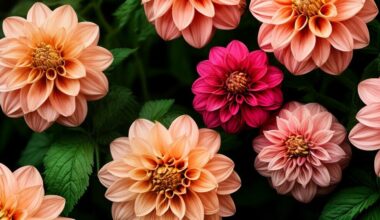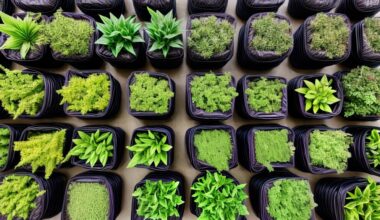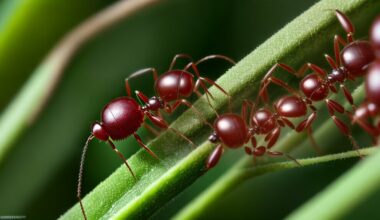Despite all your tireless efforts in planting, watering, and weeding your beloved garden, a rogue army of weeds has declared war on your landscape! Well, there’s an unsung hero waiting to come to the rescue – landscape fabric. This innovative tool is no less than a suit of armor for your plants.
So how close should you lay this protective shield around your precious greens? Good question! Deploying it too far can leave some plants vulnerable while setting it too near may suffocate them. Therefore finding the sweet spot becomes as essential as picking the right plant for that sunny corner in our yard.
Journey with us now into the intricate world of gardening where we will unveil golden rules about using landscape fabric effectively without harming our green friends. And maybe even scoring an upper hand over those pesky weeds! It’s high time we turned these invaders vanquished once and for all!
Choosing the Correct Landscape Fabric for Your Plants

When it comes to landscaping, using landscape fabric can be a game-changer. However, choosing the right type of landscape fabric is crucial for its effectiveness.
Before we dive into the proper placement of landscape fabric around plants, let’s first discuss how to choose the correct one.
The first step is to determine what kind of plants you have in your garden beds or around trees. Different fabrics are designed specifically for different plant types.
Some plants require better drainage while others need more moisture retention. Understanding your plant’s needs will help you select a fabric that complements their growth requirements.
Consider the thickness and durability of the landscape fabric as well. Thicker fabrics tend to offer better long-term protection against weeds and provide sturdiness when placing mulch or rocks on top. Look for fabrics with adequate UV resistance as this will prevent deterioration under prolonged sun exposure.
Lastly, make sure that the chosen landscape fabric allows water penetration while still preventing weed growth effectively. This balance between permeability and weed control ensures optimal plant health and reduces maintenance efforts down the line.
Proper Placement of Landscape Fabric Around Plants
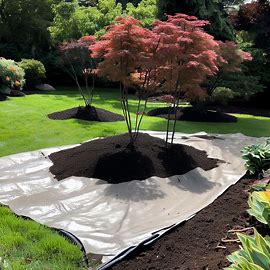
Now that you have selected the appropriate landscape fabric tailored to your specific plants’ needs let’s move on to proper installation techniques:
1. Clearing
Begin by cleaning all vegetation from your garden bed area thoroughly. Remove any existing debris such as weeds or grass before placing your landscape fabric down.
2. Measuring
Measure out an appropriate length and width for each section where you plan on installing landscape fabric around your plants.
3. Cutting
Using sharp scissors or a utility knife, carefully cut out sections of landscape fabrics based on those measurements ensuring they fit snugly within each designated area without overlapping excessively.
4. Anchoring
Secure the landscape fabric in place by using garden staples or landscape pins. Place them on the edges of the fabric, about 12 inches apart, and push them securely into the ground. This will prevent any shifting or movement once covered with mulch or rocks.
5. Planting
Cut cross-shaped openings on top of your landscape fabric to accommodate your plants. Make sure each opening is large enough for easy planting but small enough to prevent weed growth through gaps.
Preventing Weed Growth with Landscape Fabric
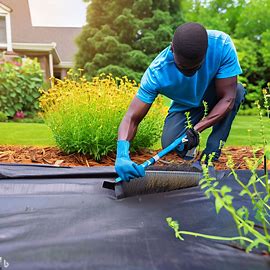
One of the primary reasons people use landscape fabric is to suppress weed growth effectively in their gardens.
By properly placing landscape fabric around plants, you create a physical barrier that inhibits weeds from sprouting up and competing for essential nutrients.
Landscape fabrics work by blocking sunlight that weeds need for photosynthesis and growth while still allowing air and water circulation to reach plant roots.
However, it’s crucial not to place your landscape fabric too close to your plants as it can hinder their ability to access these vital resources.
Maintaining Moisture Levels: The Role of Landscape Fabric
Another benefit of using proper spacing when installing landscape fabrics around plants is maintaining moisture levels in your garden beds adequately.
Landscape fabrics act as a protective shield against evaporation caused by wind exposure, helping retain moisture within the soil below.
By preventing excess water loss through evaporation, you provide optimal conditions for root development and overall plant health.
When installed at an appropriate distance from plants, landscape fabrics help strike a balance between retaining adequate moisture while still promoting healthy drainage throughout the soil profile.
Procedure to Follow While Installing Landscape Fabrics
- Prepare Your Garden Bed: Remove all existing vegetation such as weeds or grass before installation.
- Measure and Cut Your Landscape Fabric: Use measurements specific to each section where you will be placing landscape fabric.
- Secure the Fabric: Anchor the landscape fabric using garden staples or landscape pins, ensuring a secure placement.
- Create Openings for Plants: Cut cross-shaped openings on top of the fabric to accommodate your plants during planting.
Benefits of Using Proper Spacing with Landscape Fabric
Properly spacing your landscape fabric is crucial for reaping its full benefits. Let’s take a look at some advantages you can enjoy by placing landscape fabric at an appropriate distance:
- Weed Control: By preventing weed growth effectively, you significantly reduce the time and effort spent on manual weeding tasks.
- Moisture Retention: Landscape fabrics help retain moisture in your garden beds by minimizing evaporation, resulting in healthier plant growth and reduced water usage.
- Improved Soil Drainage: When installed correctly, landscape fabrics allow excess water to drain from the soil while still maintaining adequate moisture levels. This prevents waterlogging and root rot issues.
- Long-Term Plant Health: By providing optimal conditions for root development and reducing competition from weeds, landscape fabrics contribute to improved long-term plant health and overall garden aesthetics.
Potential Drawbacks if Not Placed at Appropriate Distance
While the proper placement of landscape fabric offers numerous benefits to your garden beds or around trees, not doing so can lead to certain drawbacks:
- Restricted Plant Growth: If placed too close to plants, landscape fabrics may hinder their ability to expand roots freely, resulting in stunted growth and limited access to vital nutrients.
- Limited Water Absorption: Landscape fabrics that are improperly placed can obstruct water absorption by plants as they depend on absorbing moisture directly from the soil beneath them.
- Lack of Air Circulation: Inadequate air circulation caused by improper installation distances may result in stagnant air pockets, promoting fungal diseases or rotting roots.
Conclusion
Properly installing landscape fabric around plants is essential for reaping its benefits effectively.
By choosing the correct landscape fabric, following proper placement techniques, and ensuring adequate spacing from your plants, you are on your way to enjoying a weed-free garden with optimal moisture retention and thriving plant health.

